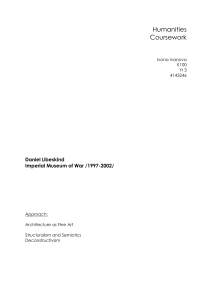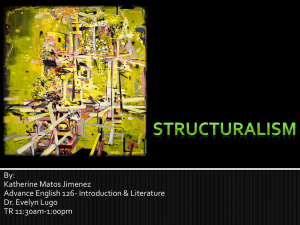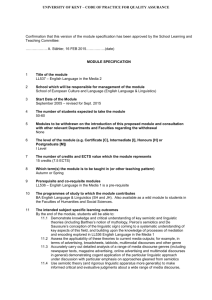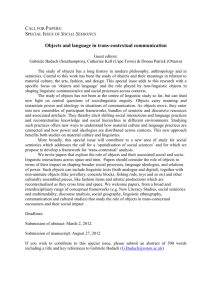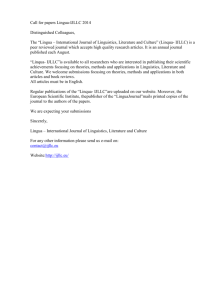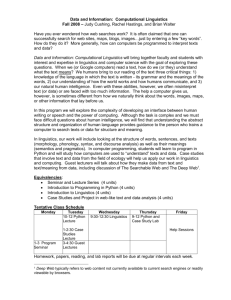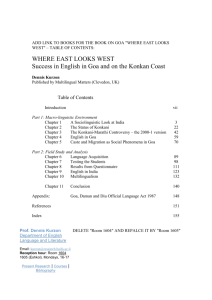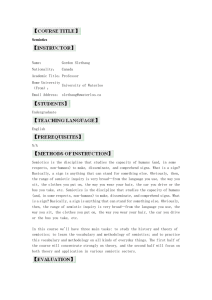Linguistics and Semiotics
advertisement
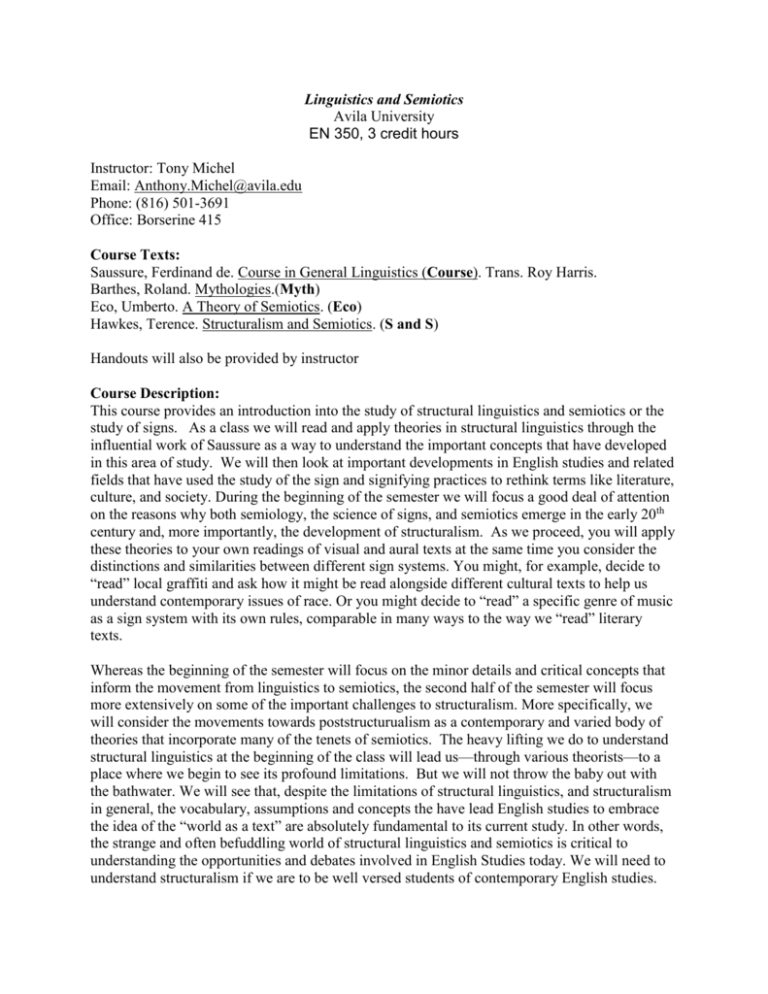
Linguistics and Semiotics Avila University EN 350, 3 credit hours Instructor: Tony Michel Email: Anthony.Michel@avila.edu Phone: (816) 501-3691 Office: Borserine 415 Course Texts: Saussure, Ferdinand de. Course in General Linguistics (Course). Trans. Roy Harris. Barthes, Roland. Mythologies.(Myth) Eco, Umberto. A Theory of Semiotics. (Eco) Hawkes, Terence. Structuralism and Semiotics. (S and S) Handouts will also be provided by instructor Course Description: This course provides an introduction into the study of structural linguistics and semiotics or the study of signs. As a class we will read and apply theories in structural linguistics through the influential work of Saussure as a way to understand the important concepts that have developed in this area of study. We will then look at important developments in English studies and related fields that have used the study of the sign and signifying practices to rethink terms like literature, culture, and society. During the beginning of the semester we will focus a good deal of attention on the reasons why both semiology, the science of signs, and semiotics emerge in the early 20th century and, more importantly, the development of structuralism. As we proceed, you will apply these theories to your own readings of visual and aural texts at the same time you consider the distinctions and similarities between different sign systems. You might, for example, decide to “read” local graffiti and ask how it might be read alongside different cultural texts to help us understand contemporary issues of race. Or you might decide to “read” a specific genre of music as a sign system with its own rules, comparable in many ways to the way we “read” literary texts. Whereas the beginning of the semester will focus on the minor details and critical concepts that inform the movement from linguistics to semiotics, the second half of the semester will focus more extensively on some of the important challenges to structuralism. More specifically, we will consider the movements towards poststructurualism as a contemporary and varied body of theories that incorporate many of the tenets of semiotics. The heavy lifting we do to understand structural linguistics at the beginning of the class will lead us—through various theorists—to a place where we begin to see its profound limitations. But we will not throw the baby out with the bathwater. We will see that, despite the limitations of structural linguistics, and structuralism in general, the vocabulary, assumptions and concepts the have lead English studies to embrace the idea of the “world as a text” are absolutely fundamental to its current study. In other words, the strange and often befuddling world of structural linguistics and semiotics is critical to understanding the opportunities and debates involved in English Studies today. We will need to understand structuralism if we are to be well versed students of contemporary English studies.



